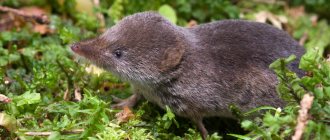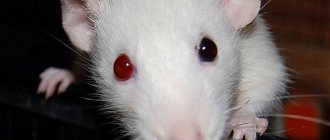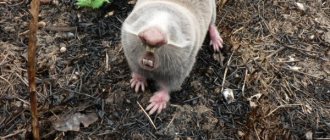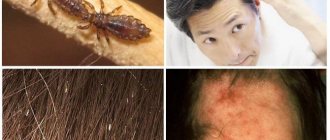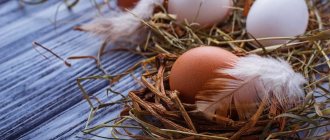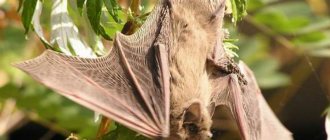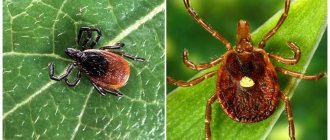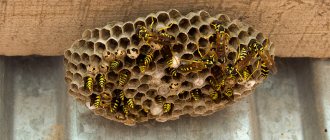In summer cottages and homesteads, you can sometimes find a miniature creature loosening the beds. With its long nose, the mouse-like animal tears up the upper layers of the soil in search of food, which is how it got its name - the shrew.
Someone begins to protect the baby, considering him useful, since he helps exterminate harmful insects, and some begin to expel these tiny animals from their territory in every possible way.
Structure and appearance
A mouse with a long nose is also called a shrew. Outwardly, it very much resembles a vole. But unlike her, this animal has a long nose, which looks more like a proboscis. The rodent's eyes are small and can be hidden behind the fur.
During evolution, the shrew has lost its visual acuity, so it uses a keen sense of smell and excellent hearing to orient itself in space.
The animal's body is elongated and covered with smooth dark brown fur, to which the earth does not stick. The shrew's front legs are short and very weak. They are not designed for digging. Therefore, an animal can make a tunnel or burrow for itself only in loose soil, or it uses passages made by moles or other animals.
Interesting! Depending on the species, the shrew may have a long tail or no tail at all. At the base of the tail of the long-nosed mouse there are glands that secrete a secretion with a pungent musky odor.
Varieties
There are more than 350 species of shrews. Only 25 of them are found in Russia. The most common types of long-nosed mice are:
- Common shrew. It can reach 8 cm in length, while its weight does not exceed 160 g. The body is covered with soft brown fur. A nose with a blunt tip is clearly visible on the head. The length of the animal's tail is equal to the length of its body.
- Tiny shrew. It got its name due to its very small size. Its weight is only 3 g, and its body length is 5 cm. The animal is recognized as the smallest representative of the mammal family. His nose is like a proboscis, and his short fur is gray-brown.
- House shrew or long-tailed shrew. This mouse can often be found in the vegetable garden or garden. For the winter, she moves to cellars or basements of private houses. The body length of this long-nosed mouse is about 8 cm, and the tail is up to 5 cm.
Tiny shrew
Control measures
How to get rid of a shrew mouse depends on the degree of infestation and the type of object where the animals have settled. The same methods are used as for gray mice. The use of poisons is reserved for severe cases.
- It should be removed from gardens and vegetable gardens using the repellent method. Sprinkle the area with wood ash, lay out grass to prevent mice: burdock, elderberry, wormwood, tansy.
- In outbuildings, cats cope well with rodents. They set mousetraps and traps if necessary.
- To get rid of them indoors, they use poisonous bait, a glue trap, and other modern methods of rodent control.
The shrew bothers humans much less often than its relatives - ordinary mice. The appearance of several individuals on the site does not require emergency measures. The rodent will destroy harmful insects and loosen the soil.
Duration and lifestyle
The shrew mouse leads a predominantly terrestrial lifestyle, but some species live underground or in the hollows of old trees. The animal is active around the clock, taking only short breaks to sleep. But you can see shrews on the surface mainly in the dark, because sunlight blinds them.
Since the shrew’s visual organs are poorly developed, it uses its keen sense of smell to search for food. The animal rarely lives longer than 1.5–2 years, as it often becomes prey for birds, snakes, wild animals or humans.
Habitat
Shrews are found almost everywhere, with the exception of the polar regions, southern regions of Australia, South America, and New Guinea. They are especially numerous in North America, Eurasia and Africa.
Mice with a long nose live on flat terrain, in tropical forests, mountain tundra, deserts, and near swamps. Some species of shrews lead a semi-aquatic life.
Interesting! No more than one pair of these animals can live on a plot of several hundred square meters. They are not prone to migration and can live their entire lives in one territory. An exception is possible only in case of danger or lack of food.
The animal tries to stay as far away from people as possible. Shrews settle in abandoned burrows of moles and other rodents; they can live on the banks of swamps and in the hollows of fallen trees. But with the onset of autumn, in the event of a fire, flood or other natural disaster, they can move closer to people, settling in barns and cellars.
What does a mouse eat in the wild?
In summer and autumn, when the time comes for the harvest to ripen, mice begin to actively prepare food reserves for winter. The main food of the animals is grain crops, as well as seeds of various plants. Field mice love wheat, barley, oats, and buckwheat.
Rodents living in forests feed on cedar and hazel nuts, maple and beech seeds, acorns, and small insects. And animals living near bodies of water prefer to eat leaves, roots and stems of plants, berries, grasshoppers, caterpillars, larvae, spiders and other invertebrates. House mice living near people willingly adapt to the human diet and eat bread, meat, dairy products, and sweets.
Animals living in the wild drink very little. The mouse body independently produces water by breaking down food. Additional sources of moisture are fleshy plant leaves, fruits, and vegetables.
Interesting Facts
Mice with a long nose attract increased interest. Scientists managed to find out some interesting facts about these animals:
- Some shrews can be poisonous. For example, the site of a short tooth shrew bite may become swollen. This is how an allergic reaction to its poison manifests itself. The animal needs it in order to hit prey, the size of which exceeds the shrew itself.
- Shrew cubs are born completely blind, naked and helpless, but from birth they have a full set of teeth, which are covered with strong enamel. Females use a curious method to carry their babies. One of the cubs grabs the mother’s tail with its paws, the second clings to the tail of the first, etc.
- The size of a mouse's brain is 1/10 of its body. This figure exceeds the ratio between humans and dolphins.
- Despite the fact that the shrew is tiny in size, it can be quite aggressive. This is especially evident at the moment when someone encroaches on its territory or prey. She will attack without hesitation in such a situation if the size of the uninvited guest exceeds the size of the mouse itself.
- In autumn, the animals decrease in size, and their skulls become flatter. In spring, the animal's body returns to its natural parameters.
- The shrew's heartbeat reaches 700 beats in 1 minute, and due to fright it can rise to 1200. The animal is so timid that it can die from a sharp sound or even a clap of thunder.
- This mouse's metabolism is so strong that to provide itself with energy, it has to eat an amount of food per day that is 6 times its own weight.
Nutritional Features
Due to the fact that a mouse with a long nose has an increased metabolism, the animal constantly needs food. Moreover, the smaller the individual, the more often the shrew should eat.
Without food, it can last no longer than 5–9 hours, which is why the animal’s sleep is short-lived. With a lack of nutrients, the animal is capable of falling into torpor, as a result of which its body temperature decreases.
The shrew's diet is based on worms, various insects and their larvae that live in the ground. Sometimes they attack small amphibians, mice, and lizards. When there is a lack of animal food, mice with long noses are able to look for an alternative and eat the seeds of fruit or coniferous trees.
Using ultrasonic repellers
You can try to scare the shrew away from the area by using repellent devices. They are mechanical, electromechanical and electronic.
You can make mechanical shrew repellers with your own hands. For this you will need old glass or tin jars, glass and plastic bottles. They are put on an iron rod, which is stuck into the ground so that it is located below the passages of the animals. Such a device will scare away the pest from the garden with sharp sounds and vibrations of the soil when the bottle or jar is exposed to wind.
If you are making a “spinner” from a plastic bottle, then in its bottom you need to make a hole with a diameter slightly larger than the diameter of the pin on which you plan to put it. Then rectangular windows are made on four sides of the bottle, one edge of which should be bent. When the wind blows, the bottle will spin and make a scary sound.
Computer disks hanging on ropes will have the same effect.
installation of ultrasonic repellers.
Of these repellers, we can recommend “Tornado OZV 01”. It is capable of scaring away shrews, moles, and mole crickets with the help of periodically emitted vibrations at a distance of 20-30 m. It is installed in the garden.
A more powerful device is “Anti-Crote”. Its range of action is up to 1000 m.
Natural enemies
Due to their small size, the animals are vulnerable to larger animals. The long-nosed mouse can become a victim of birds of prey, ferrets, weasels, cats, dogs, and foxes. However, predators usually refuse a snack if they smell the peculiar aroma of a shrew.
The enemy of this mouse is also man. People often mistake them for pests and destroy them. But, as practice shows, these animals bring more benefits. Of course, they can damage the root systems of small plants when they dig while chasing their prey.
But at the same time, they perfectly loosen the soil, saturate it with oxygen and fight insects that pose a danger to the crop. They manage to destroy pests in places where even birds are unable to reach them.
Shrew - description of the pest
- As stated earlier, shrews are often confused with mice. They are similar in size (just as small), the fur is thick and velvety, but in appearance there is a main difference - a proboscis and very small ears.
- The animals spend most of their lives in search of food, as they have a very fast metabolism; they feed not only on insects, but also on seeds, carrots, beets and other root vegetables.
- At one time, a shrew can give birth to about 14 cubs, life expectancy is about 2 years. Based on these figures, we can conclude that such animals can quickly take over a summer cottage, thereby causing great harm to humans.
- There are currently about 300 species of shrews in the world. The animals prefer moist soil, as it is convenient to build underground passages on it. They use tree roots as shelter, where they set up their overnight shelter, bringing leaves, grass and branches there.
- Shrews are classified as predators, as they happily feast on larvae, beetles, worms, frogs, lizards and other small animals that come their way.
- These animals are very attached to food, so if you leave the animal for 8-9 hours without food, it will most likely die.
- Shrews give birth once or twice a year; the gestation period lasts from two to four weeks. Cubs are born blind, without fur, but with teeth.
Damage from shrews
Such animals are beneficial only for the soil and fruits, since they eat most of the harmful insects, but that is where their benefit ends. Their diet also includes earthworms, which are involved in the process of loosening the soil. Animals often damage plant roots and spoil fruits.
Such animals can be carriers of various infections that are dangerous to humans. Ixodid ticks and other parasites often live on the body of the shrew.
Repellers
Electronic type repellers produce waves within 400 Hz, capable of spreading over 20 m. The sound is inaudible to humans and domestic animals, but is very unpleasant for shrews. They react sharply to noise, constant discomfort prevents them from looking for food, so the animals are forced to run away to another area.
To combat these animals, it is recommended to use commercial traps, as their action is more accurate and effective.
Mechanical methods
Mechanical methods involve setting traps and snares, which are often used to catch mice and rats.
You can use repellers that are used for moles. An effective method is to place tin can traps around the area, as described above, but this method does not work when there is no wind.
Pesticide
At the moment, various types of chemical methods have been developed to destroy garden pests.
Most Popular:
- “Nutcracker” is a thick paste that needs to be distributed near the burrows.
- “Rat Death” is the most powerful substance, as it is a heavy poison. This remedy is used very carefully and in extreme cases.
- "Hunter Anti-Rodent" causes suffocation in animals. The composition of the drug includes: cheese, flour and other luring substances.
These drugs act very quickly, causing the animal to suffocate and subsequently die. Since you are working with toxic substances, you should be careful, read the instructions before use and act on them.
Such drugs should not be used if pets or small children live on the premises. Pesticides are used to a minimum, since to some extent they can affect the quality of the subsequent harvest.
Folk remedies
In pest control, first of all, you need to know who to fight, its characteristics, habits, and taste preferences.
You cannot use random methods or powerful pesticides, because all this can only cause harm:
- You can fill the shrew's passages with water. This method is very effective if the animal has just appeared and there are few holes. This requires about 10 liters of water. For a more accurate result, it is recommended to mark all holes with flags.
- At the entrance to the holes you can put food that smells unpleasant, this could be onions, garlic, herring, spoiled meat, mothballs.
- He recommends placing rags soaked in gasoline and kerosene near the minks. But it should be remembered that in hot weather this method can be dangerous due to the risk of fire.
Reproduction and offspring
Typically, a female gives birth only 1–2 times during the year, less often – 3. Pregnancy in shrews lasts 2–3 weeks, after which 4 to 14 babies are born.
Both parents are involved in arranging the nest for future babies. They line it with dry grass and leaves. The cubs are born absolutely helpless, but within a month they can begin an independent life.
Pregnancy, babies
A pregnant shrew carefully prepares for her litter. She lines her hole with dry leaves and grass to create a fairly soft litter. In May-July, about 6-10 cubs appear. At first the mother looks after them with trepidation and care, but very quickly her love fades. Then the cubs themselves go in search of food.
The shrew is very active and agile - it runs very fast, jumps far and even swims, if necessary. She makes whistling sounds. He has a highly developed sense of smell, but most likely never uses his sight and hearing.
Population and species status
Shrews prefer a solitary existence. They always fight for their territory. Mice warn that the area is occupied by the peculiar smell that their glands emit. Today, some species of long-nosed mice are on the verge of extinction.
This is due to the uprooting of forests and intensive human agricultural activities. The Eisentraut's shrew, Rampian mouse-like shrew and forest shrew are already listed in the Red Book.
Long-nosed mice are good helpers for farmers and gardeners, as they destroy crop pests. But in the absence of live food, they easily switch to seeds to wait out the difficult period.
